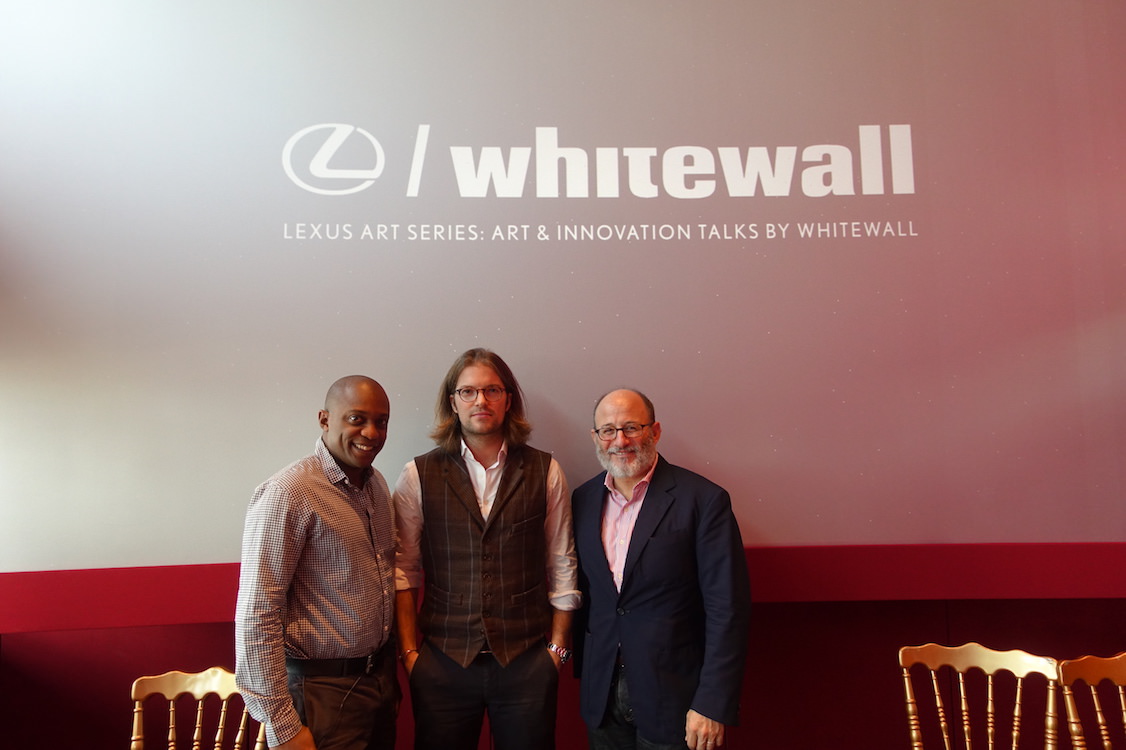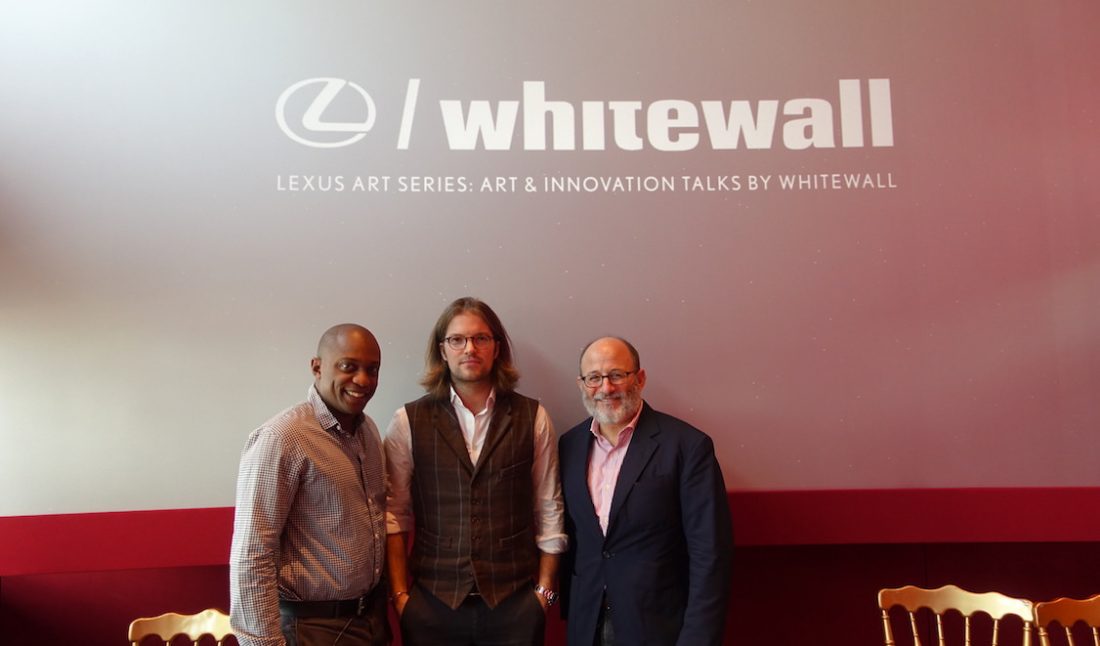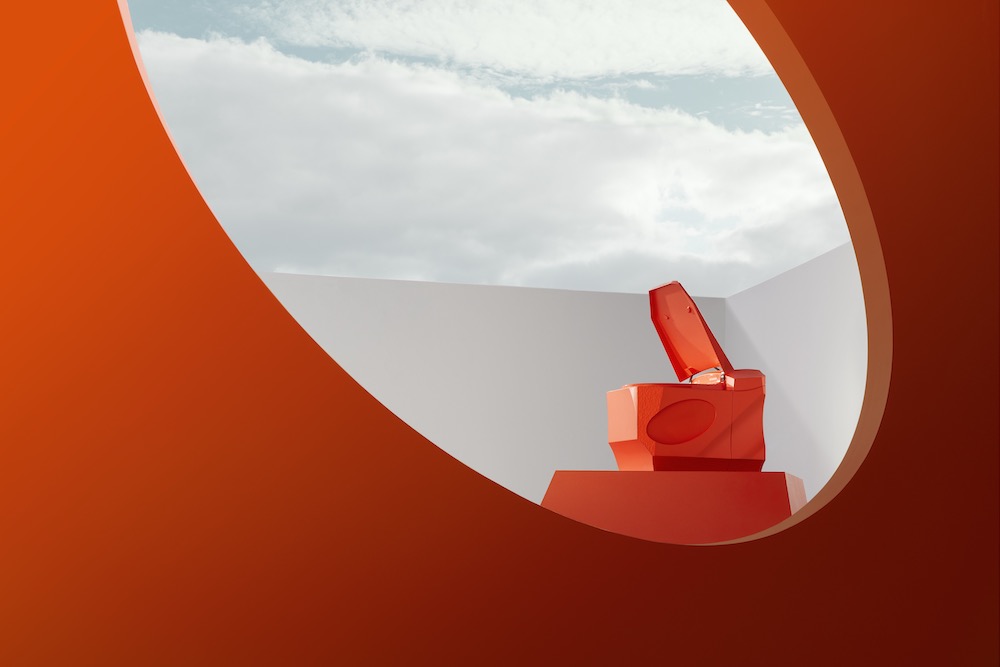Today marked Whitewall’s second installment of the “Lexus Art Series: Art and Innovation Talks,” hosted in the Faena Miami Beach hotel’s screening room, and in partnership with Lexus.
THE EVOLUTION OF ARTIST MANAGEMENT
 Artist Hank Willis Thomas, art world entrepreneur and author Magnus Resch, and Art Market Monitor’s Marion Maneker.
Artist Hank Willis Thomas, art world entrepreneur and author Magnus Resch, and Art Market Monitor’s Marion Maneker.
The first panel, “The Evolution of Artist Management,” kicked off with a talk about the changing business of artist management, and how the art world’s dynamics between artists, gallerists, curators, and collectors is taking new shape. To guide us through this multifaceted topic, we heard from artist Hank Willis Thomas and art world entrepreneur and author Magnus Resch, moderated by Art Market Monitor’s Marion Maneker.
“We want to talk about the positive sides of how artists are represented, and how they make their way in their careers in the art world,” began Maneker, as he transitioned into asking Thomas about his frustrations with the structure of today’s art market.
“I am not so much frustrated particularly with the art market any more than I’m frustrated with life. It’s equally as brutal. I’ve come to accept it for what it is,” said Thomas. “I think one of the challenges I face as an artist is not fitting into a box. Collectors often want to know, ‘what kind of work do you make?’ And the answer to that could literally be the one-million-dollar answer…I’ve learned that the inconsumable has become consumable within recent years in the art market. This need to kind of package ourselves into a neat box so that someone who doesn’t really want to invest intellectually in the work can invest financially.”
Aside from perfecting their image, alongside their artistic craft, Thomas also spoke about feeding into what art buyers want versus what artists want to create. “That limits the creativity of the artist because it asks us not to challenge ourselves and the collectors and the institutions. What we are, as fine artists, are very much in the business of the future. We’re trying to create discourse that will actually be going on 100 years from now.”
Resch also chimed in to speak about the internet’s influence on galleries, and the protection it has, and always will have, for artists. “If I’m a producer of a good that needs to be sold, a product, why would I want to produce something that no one wants? Bowie, for example, did albums that people didn’t want that were not commercial or successful, but then the next album, based on that, it was successful. Artists will always produce something that collectors will buy,” he said.
There’s also the unknown world of art school to those foreign to its curriculum, and the secrets of success that are untaught and nearly unspoken. “In art school, they teach you how to become successful, but no one teaches you what to do if you are,” said Thomas. “In the United States, if I lived in Mississippi, I could make $60-70,000 a year and be living really, really well, and if there are artists in some of these states, it may actually change the way that fine art and many ideas are related to instead of being so alienated,” he continued.
And there are the dilemmas of self-funding versus being funded in the beginning stages of an artist’s career, and even so in working with large bodies of work that are promising. “I think people being like, ‘oh, this artist has promise, we’re just going to throw money at him,’ the problem I have with that is that when you build a market around artists that are unproven, so to speak, there’s now a lot of people with a lot of money who have a vested interested in maintaining the value of that work. Any museum will listen to anyone with 100,000 for at least six months…”
Furthering the discussion before its conclusion, Thomas pointed out one last valid point for any art lover who is dedicated to its craft regardless of money. “You don’t have to be rich to buy art. I’m invested in not just the art market, but the art world, and integrating it more fully into the rest of the world. And I think everyone and everything benefits from it. We enjoy the exclusivity, but the gig is up. Everyone knows what’s going on. The question is rather than letting people just coming into the art world and fill it up, why don’t we in the art world do a better job at filling in these conversations in government and other media, and force a new way of approaching life.”
FAENA FORUM & FAENA ART: FROM THE IDEA TO THE LAUNCH
In the second discussion, “Faena Forum & Faena Art: From The Idea to The Launch”—Faena Forum’s Executive Director Ximena Caminos spoke with Whitewaller Miami Guest Editor and President of Arison Arts Foundation, Sarah Arison.
“The Faena District, the Faena Forum, Faena Art is a vision. This is years of dreaming and planning,” said Sarah Arison, as she introduced Caminos and the city’s newest district—the Faena District.
Gaining insight from their previous projects in Buenos Aires, Faena began opening its first properties in Miami, like its hotel on Collins Avenue in December 2015. To follow just one year later is a district, and a true vision to incorporate and include art and art forms from all over for those visiting or living in Miami.
“This vision is a collaboration. It’s a vision that Alan Faena originally had and we created a district there with culture at its heart, and an arts center there as well,” said Caminos. “He thought this would be something similar to what we did in Buenos Aires, which was revitalizing a whole area in the city which was very centric and strategic, but at the same time, very depressed,.”
This week, the new amphitheater-style Faena Forum opened—a OMA/Rem Koolhaus-designed structure.
“Something interesting about OMA and Rem particularly is that he teaches all of the architects that work with him scale. It’s one of the biggest challenges as an architect—the right scale. The proportion is key. And when I went into the forum for the first time I thought it was small. But then I realized it was just the perfect scale. It doesn’t inhibit you,” said Caminos.
The new building welcomes guests into a quaint yet expansive space similar to a Greek-style amphitheater, or a theatre-in-the-round setting. Arison commented on a previous conversation her and Caminos had about being bored with the traditional models of museums, and dissected the difference between an art institution as a temple versus as a forum.
“It’s fantastic that you chose the word forum,” said Arison. “[The word] goes centuries back as a place of gathering and communicating and discussing and interacting and engaging…that is the institution of the future,” said Arison.
“I went and visited the ground floors in the typical amphitheaters, where the Greek had their philosophy sessions, and the ground floor is inspired by the Parthenon. It’s just beautiful geometry,” said Caminos.
Faena Art is a nonprofit platform of diverse art projects that showcase innovative, site-specific, and immersive creative practices that push the boundaries of art, science, social practice, and philosophy—and right here in Miami Beach.
“With Faena Art, what we tried to do is create an animalistic environment where it’s a platform for a cross-pollination of ideas and a space to throw interesting ideas into society and share with as many people as possible,” said Caminos.
Also new to the district is Faena Bazaar—another OMA/Rem Koolhaus-designed building—that offering pop-ups and events during this busy art week already in full swing.











